
If you will like this sample and would like to have a similar or any other essay was written for you, you may easily order essays here. The only thing you have to do is to fill in the order form and professionals to take care of your tasks!
There are many cases of blindness in the world, most of them are from the UAE. In most cases, the occurrences of blindness in the United Arab Emirates have been reported in people suffering from the diabetes type 2 due to high rates of people suffering from the disease in the region. Diabetes retinopathy causes the rupture of blood vessels supplying blood to the retina of the eye causing the loss of vision. Artificial retina is a device that can be used to correct the eyesight problems, especially blindness caused by cataracts and diabetes. Argus II retinal prosthesis is an artificial gear that has become successful in solving the eyesight related cases. However, there are some devices that are under development, including Retina Implant Alpha-IMS and Boston Retinal Implant. According to the report released by the WHO, 80% of blindness cases can be cured, hence, artificial retina will be very useful not only to the UAE but also to 426 million people, who are blind all over the world.
Artificial Retina
Introduction
Artificial retina is described as a device consisting of an array of microelectrodes. It is usually implanted into the eyes of blind people, whose blindness is caused by a severe and profound retinal disease. Artificial retina is made up of the carbon nanotube biometric film with a video processing unit and a transmitter. The main aim of its development was to restore the limited sight to the blind persons to enable them to recognize individuals and read during mobility. The artificial retina technology appeared in the 1970s when scientists began working on the development of prosthetic eyes for the use by masses. By 1990, the researchers had discovered chronically a stimulation of neurons without destroying or killing them [3]. They also learned to design electrodes that had an ability to resist degradation in the process. These inventions were key in the advancement of the artificial retina and its success. Further, the development of digital cameras, which uses light-sensitive photodiodes functioning in the same way as photoreceptors in the eyes, aided in the invention of the bionic eye mechanism such as the Argus II and the Artificial Silicon Retina, and many more in various stages of development [3].
Relevance and Significance of Artificial Retina
According to the World Health Organization (WHO), the report on visual impairment and blindness released in 2014 indicates that more than 280 million people in different parts of the world experience a visual impairment problem [2]. Out of this, 246 million have a low vision, which cannot be corrected by spectacles, while 39 million of them are blind. Nearly 90 % of the visually impaired individuals come from the low-income setting. In the UAE, about 2 million people suffer from the visual impairment or 20% of the total population [1]. About 82% of blind people are those aged 50 years and above. According to this report, 80 % of visual impairment cases can be cured or prevented. Hence, artificial retina can be very useful, since it can be used in curing of 80 % of the affected persons worldwide, and in which is a significant number [1].
In the world today, it is apparent that more than 400 million are diabetic, while the 2015 survey indicated that approximately 1 million people were diabetic in the UAE [1]. Most of these occurrences are the diabetes type 2 cases, which is a chronic illness that results in a diabetic eye disease and eventually blindness. According to the WHO, the UAE is estimated to have the highest cases of diabetes and blindness from this problem. Further, the cases are increasing drastically both in the United Arab Emirates and in the world, as a whole. According to the WHO, the prevalence had risen from 6% to 14% in adults between 1980 and 2014 [1]. Therefore, there is a need for the action to reduce the cases of blindness among people living with diabetes in order to improve their lives. The problem can be effectively addressed using artificial retina, since these people can be able to see their loved ones, do the basic chores for themselves, and read. Consequently, the technology can be imperative in the UAE where many people are suffering from the type 2 diabetes and are prone to blindness. Besides, since the cases of diabetes and blindness are on the increase in these regions, the artificial retina will come be useful to help solve the problem [6].
Retinopathy
Diabetic retinopathy occurs in patients, who have diabetes both diagnosed and undiagnosed. It is a vision problem that results from the presence of elevated sugar levels, an aspect that destroys the human eye retina [7]. It ruins the light-sensitive lining of the eye progressively. It is a severe sight-threatening complication leading to total blindness if not treated. It occurs when blood vessels are damaged by diabetes and results to the leakage of blood together with other fluids by the tiny blood vessels. As a result, the retinal tissue swells leading to the blurred or cloudy vision. In its late stages, it causes the closure of blood vessels, and hemorrhages into the vitreous and retinal detachment is leading to the profound vision loss [7]. The main retinopathy problem includes proliferative and background retinopathy. In accordance with the survey of 2011 conducted by the International Diabetes Federation (IDF), 126.6 million people were suffering from diabetic retinopathy, and 37.3 million patients had eye sight-threatening diabetic retinopathy [1]. Hence, the artificial retina is very crucial as it can help more than 30 million people solve their vision related issues and give them a chance to see again.
Overview
The paper will mainly focus on various artificial retina devices. It will give the statistical evidence of people that are affected by visual impairment due to either their old age, cataracts or diabetes retinopathy justifying the need for artificial retina. The statistics will be drawn from all over the world with special attention to the UAE [3]. The paper will also examine the design of artificial retina based on mechanical and electrical design. Finally, it will give an analysis of the statistics and focus on key projects that are geared toward the development of an efficient artificial retina.
Artificial retina design
There have been uniquely design artificial retina devices developed. Some of these special gears include Argus II Retina Prosthesis System, Retina Implant Alpha-IMS, and Boston Retinal Implant.

Argus II Retina Prosthesis
Mechanically
It consists of three internal and three external components. The internal elements are the internal coil for receiving the telemetry data relayed by external parts [7]. It also has a ribbon of cables connecting the casing to an array of platinum microelectrodes of the diameter measuring 200 micrometers and center В– to center spaced 575 micrometers apart fixed in a very thin film of polyimide. The ASIC (Application Specific Integration Circuit) is a final internal component of the internal processing unit. It is usually housed in a casing that is being hermetically sealed with the use of the concave surface for suturing onto sclera [5]. The external components of Argus II include the coil for transmitting data and power through radio frequency attached to the sidearm of glasses, a video camera added to the center of two glasses, and a VPU (visual processing unit). The latter one can be mounted onto clothing or hang around the neck.
Argus II Retina Prosthesis system
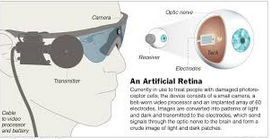
Fig. 1. Picture of a person wearing Argus II device

Fig. 2. Example of complete Argus II device
Electrically
The Argus II intraocular components are implanted by the use of three ports standard pars plana vitrectomy. The posterior hyoid face is removed along with any epiretinal membranes in existence. Then, a sclerotomy array, which is 5.2 millimeters in width and about 3 mm posterior to the limbus, is made in the supertemporal quadrant [5]. The microelectrode array is put in the macular region via the sclerotomy and secured using a titanium retinal tack, which is spring tensioned placed at the base of the array. After inserting the microelectrode array sclerotomy is sutured close, tutoplast pericardial put over the hermit casing in the superior temporal quadrant, and then the conjunctiva as well as TenonВ’s capsule closed.
Implantation of Argus II
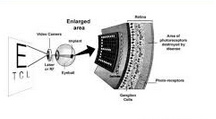
Fig. 3. Implantation of Argus II device
Retina Implant Alpha-IMS
Mechanically
It consists of 1500 pixel, each with the photodiode for light intensity sensing, an electrode that transfers electrical impulses to the retinal layers, and an amplification circuit. The impulse magnitude for every pixel is connected at the point of the pixel to the brightness of incoming light. The array, with dimensions of 3 mm x 3 mm x 70 micrometers being attached beneath the fovea, processes the visual input at the speed of 5-7 hertz [5]. It is located on a polyimide foil, which temporarily leaves the sclera supero and the choroid, as well as connects to the power cable leading to subdermal Retroauricular put coil inside the ceramic casing. The coil has the function of receiving the communication and energy wirelessly from the coil outside the body held magnetically on top of it at the back of the ear. In turn, the external braid is attached to the control unit, which is handheld and makes it possible for users to make adjustments on the amplification and a battery pack.

Electrically
The Alpha-IMS micro-photodiode, a subretinal prosthesis device that is usually placed through the implantation in patients suffering from the degenerative outer retinal disease in the layer of degenerated photoreceptor cells [4]. The electrical impulses within the gear stimulate the patient's bipolar cells located in the middle of retinal layers responsible for transmitting signals to the RGCs.
Alpha IMS
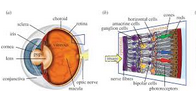
Fig. 4. Example of an alpha IMS system
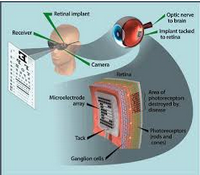
Fig. 5. Implanted alpha IMS system
Intelligent Retinal Implant System (IRIS) Bionic Vision Restoration System
Mechanically
It is the device made up of three main components; a transmitter unit created into a pair of glasses and a camera, an implant fixed as a wireless receiver being inbuilt, and a small computer that optimizes visual signals [4]. The processing unit and the camera sensor contain an array of pixel circuits, which are independent. The pixel circuits encode the light change information from their site to precise spikes timing. By contrast, the data related to light intensity are encoded through rate coding involving small spikes reaching to one impulse every millisecond.
Electrically
The IRIS has two models, one with 49 microelectrodes and the other one with 150 electrodes. The stimulation provided by the microelectrode gives visual perceptions, especially those ones of basic patterns such as vertical, roses or horizontal bars [4]. However, it is still under clinical trials in various countries around the globe.
Bionic eye
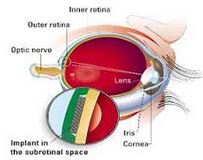
Fig. 6. Implanted IRIS device
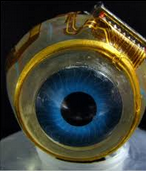
Fig. 7. Model of an IRIS device
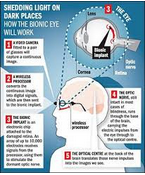
Fig. 8. Explanation on how the device functions
Boston Retinal Implant
Mechanically
The external component of the gear, which is still under study, includes a computer controller. The internal components are an internal processor housed in titanium hermetic casing attached to the superior nasal quadrant on the sclera of the eye and a microelectrodes array entering the choroid and sclera made from the sputtered oxide film with the diameter of 400 micrometers each. It also contains an internal coil placed immediately below the conjunctiva of the anterior eye and goes through the processor [4]. The large receiver coil found in the device increases the capability of data and power telemetry. Meanwhile the long cable linking the components inside the device to the microelectrode array enables easier implantation.
Electrically
The computer has an interface that enables the user to adjust to various electrical stimulations of the retina parameters including duration, spatial distribution, and strength. Through the amplifiers, the computer sends data and power signals wirelessly to the internal components through the near field coupling [4]. The internal coils receive signals and pass them along the internally located processor. The internal processors then decode them and produce stimulating impulses to the microelectrode array through the serpentine polyimide foil.
Boston Retinal Implant
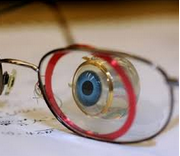
Fig. 9. Sample Boston retinal implant device

Fig. 10. Implantation and functioning of Boston retinal implant
Analysis and Statistics on the Topic
The WHO states that more that 285 million people in the world are visually impaired, while 246 of them experience the problem of low vision. In addition, 38 million individuals have total blindness. In the UAE alone, more than 2 million persons experience total blindness, with 60 percent of them having the type 2 diabetes [5]. As a result, they are at risk of losing their sight in the future. Out of the total cases of blindness, 80% of them can be cured [5 ]. Globally, it is estimated that about 387 million individuals suffer from diabetes mellitus, 93 million of people have diabetic retinopathy, and for every three ones with the diabetes type 2, one is being at risk of becoming blind. Further, 17 million people have proliferative retinopathy, 21 million ones have diabetic macular edema, and 28 million ones have vision threatening retinopathy. The prevalence of diabetic retinopathy is 77.3% to patients with the diabetes type 1 , 25.1 % to those with the type 2 diabetes, and 19% in the UAE. Hence, the artificial retina technology can be used to save people from blindness and assist them in regaining their sight. The high number of possible curable cases makes it necessary for the need for artificial retina. The advantage of technology is that it will help cure a very high number of blindness occurrences estimated at 80%. The efficiency of devices, especially Argus II, is reported to be high [5]. The disadvantages, however, are that the artificial gear cannot cure all diabetes cases. In addition, the devices are very expensive and if not inserted properly can lead to complications.

Projects to Develop the Efficiency of Artificial Retina
There have been various projects aimed at the development of efficiency of artificial retina. One of them includes such one initiated by the United States Department of EnergyВ’s (DOEВ’s) aimed at developing an implantable microelectronic retinal prosthesis with the ability to restore vision to those blinded people by retinal diseases, such as diabetes retinopathy. To overcome the challenge experienced in the evolution of effective and durable products, the research team took an advantage of the resources provided by the DOE and unique research technologies [2]. The research group is continuing with the study and currently is developing a film transistor that is ultra-thin. The team is also exploring the bio-inert oxide films to determine their suitability in enabling high-energy storage capacitors and serving as an alternative encapsulating coating.
An artificial retina with an ultra-thin film transistor

Fig. 11. Artificial retina with an ultra-thin film transistor
Another project is the one pioneered by an engineer in North Carolina State University aimed at efficient and safe artificial retina. He has discovered that the effectiveness and efficiency of the device can be improved by altering the size and shape of the electrode array, since they change the direction and flow of current. The researcher is also working on thermal modeling and electrical modeling to design the configuration of the optimal electrode array, which can have spatially selective neural stimulation.
Artificial retina with the microelectrode array
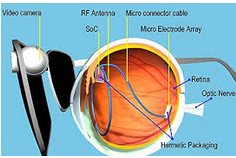
Fig. 12 Artificial retina with micro electrode array
An ANR funded project has also been initiated to develop an artificial retina with pixelized architectures nanotubes that are TiO2 based, vertically aligned, and physicochemically modified for an easier absorption of visible light [3]. They act as artificial photoreceptors replacing degenerated natural photoreceptors if the neuronal network of retina is fully or partially maintained.
The first step in our order system is to let us know the details of your paper by filling in our form We provide direct communication between you and the assigned writer, which is highly encouraged The only thing that is left for you to do is click the “Download a File” button so that you can finally get your hands on your final paper.![]()
![]()
![]()
Conclusion
The cases of eye impairment have been on the increase across the globe with the estimated number of the affected ones of 285 million people in the world and 2 million individuals in the UAE. Most of the vision related problems could be attributed to the type 2 diabetes, which is estimated to affect 60% of diabetic persons in the United Arab Emirates with the risk of blindness. Consequently, these high cases of blindness occurrences justify where the artificial retina should be used in treatment to reduce the number of blind people in both the world and the country analyzed. Various artificial retina gears have been developed with varying mechanical and electrical designs. The most successful artificial retina is Argus II, which has been successfully used to treat blindness cases related to the old age and diabetes retinopathy.
Earn 10% from every order!
Earn money today! Refer our service to your friends

